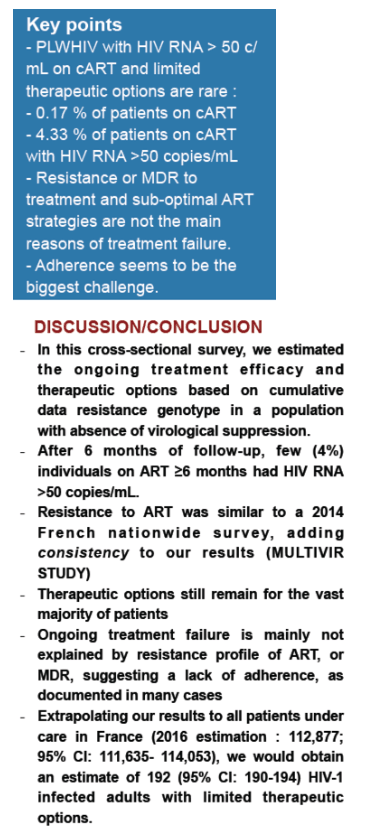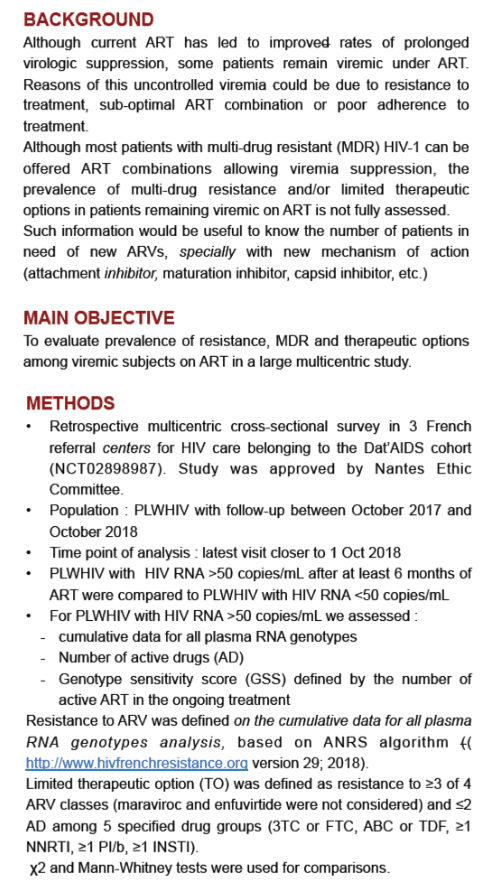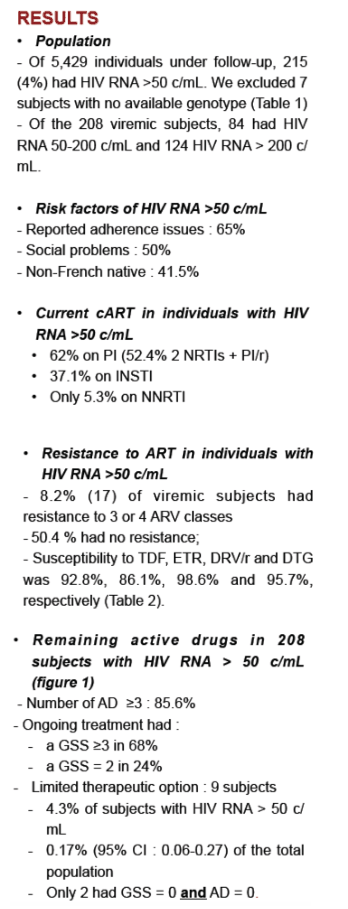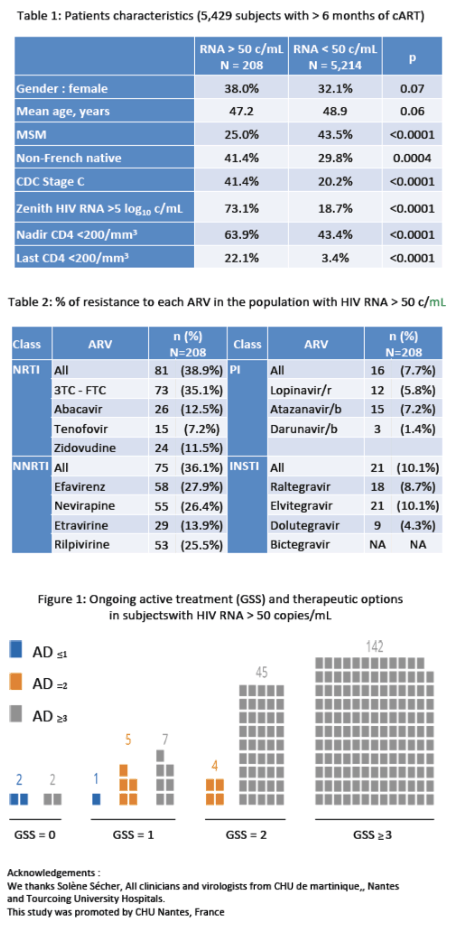 |
 |
 |
| |
PREVALENCE OF RESISTANCE AND LIMITED THERAPEUTIC OPTIONS IN PATIENTS VIREMIC ON ART
|
| |
| |
CROI 2020
Olivier Robineau1, Elisabeth Andre-Garnier2, Lise Cuzin3, Solene Secher2, Felicie Dewulf1, Fanny Taudiere3,
Laurence Bocket4, Raymond Cesaire3, Virginie Ferre2, Clotilde Allavena2, Andre Cabie3, Francois Raffi2
1Centre Hospitalier de Tourcoing, Tourcoing, France, 2CHU de Nantes, Nantes, France, 3CHU de Martinique, Fort-de-France, Martinique, 4CHU de Lille, Lille, France

abstract
Although current ART has led to improved rates of prolonged virologic suppression, some patients remain viremic under ART. We evaluated the prevalence of resistance and therapeutic options among viremic subjects on ART in a large multicentric study
All HIV infected adults on ART for ≥6 months on Oct 1, 2018 at 3 French sites from the Dat’AIDS cohort (NCT02898987) were included. We compared individuals with last confirmed HIV RNA >50 c/mL vs ≤50c/mL. For each viremic subject, mutations were analyzed to assess cumulative ARV resistance genotype [ANRS algorithm (version 29; 2018)], genotype sensitivity score (GSS) and the number of active drugs (AD). Limited therapeutic options (TO) was defined as resistance to 3 of 4 ARV classes (maraviroc and enfuvirtide were not considered) and ≤2 AD among 5 specified drug groups (3TC or FTC, ABC or TDF, ≥1 NNRTI, ≥1 PI/r, ≥1 INSTI), based on cumulative genotype. χ2 and Mann-Whitney tests were used for comparisons
Of 5,429 individuals under follow-up, 215 (3.97%) had HIV RNA >50 c/mL. Excluding 7 subjects with no available genotype, characteristics of the 208 viremic vs virologically suppressed subjects are shown in Table. Adherence issues and social problems were found in 64.9% and 49.5% of viremic individuals, respectively. On cumulative genotype, 8.2% of viremic subjects had resistance to 3 or 4 ARV classes and 50.4 % to none; susceptibility to TDF, ETR, DRV/r and DTG was 92.1%, 82%, 98.6% and 95.7%, respectively. Number of AD was 3 in 85.6% of viremic subjects, while last ART regimen had a GSS 3 in 68.2% and a GSS=2 in 24%. The proportion of subjects with limited TO was 4.33% (n=9) of viremic subjects and 0.17% of the total study population. Among these 9 subjects, all had an AIDS history, with mean nadir CD4 of 53/mm3, and 5/9 zenith HIV RNA >6 log10 c/mL. If we extrapolate our results to all patients under care in France (2016 estimation: 112,877; 95% CI: 111,635-114,053), we would obtain an estimate of 192 (95% CI: 190-194) HIV infected adults with limited TO
Few individuals on ART 6 months had persistent viremia; they very rarely harbored multi-resistant viruses for which it is not possible to construct a suppressive ARV regimen. In this context of poor adherence-related viremia without great loss of TO, interventions to improve compliance, rather than new ARV classes, are needed



|
| |
|
 |
 |
|
|